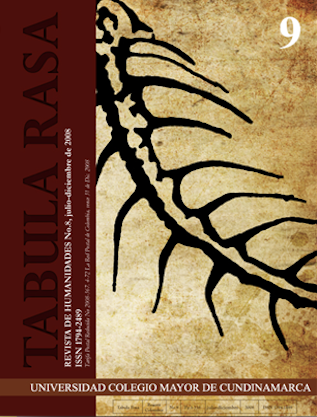Youth and Crowds: Approximations to Understanding Youth Movements
Juventud y multitud: Aproximaciones para abordar los movimientos juveniles
The present article assumes the thesis that current youth movements can be understood from the category of “crowd.” To deal with this thesis, the article first presents a genealogical approximation to the concept of youth. In this section, a general presentation is given about how historically in the West, youth has been understood from a privileged, not exclusive perspective based on the conception of pubescence, adolescence, medieval young people, industrial young workers and post-industrial youth; the article also insists on the way that social moratorium is understood in relation to youth. In the second part, the text deals with the concept of crowds based on the theoretical approaches by Antonio Negri, Michael Hardt and Paolo Virno. It examines crowds from three perspectives: the philosophical and positive, the concept of class, and the idea of power. The article ends with a presentation of a few guidelines for reflection around youth movements from the viewpoint of crowds.
Article visits 192 | PDF visits 117
Downloads
Avello-Flórez, José y Antonio Muñoz-Carrión. 2002. «La comunicación desamparada. Una revisión de paradojas en la cultura juvenil». En: Félix Rodríguez-González (ed.), Comunicación y cultura juvenil. Barcelona, Ariel.
Chamero, Juan. 2002. « Movimiento de resistencia global» en Aunmas.com. (23 de febrero de 2002). http://www.aunmas.com/sociedad/globalizacion/doc1.html
Costa, Pere-Oriol, José Manuél Pérez y Fabio Tropera. 1996. Tribus urbanas. El ansia de identidad juvenil: entre el culto a la imagen y la autoafirmación a través de la violencia. Barcelona, Paidós.
Balardini, Sergio. s.f. ¿Qué hay de nuevo, viejo? en Nueva Sociedad 200 96-107 http://www. nuso.org/upload/articulos/3299_1.pdf
Negri, Antoni. 2006. Movimientos en el Imperio. Pasajes y paisajes. Barcelona, Paidós
Negri, Antoni. 2003. Del retorno. Abecedario biopolítico. Barcelona, Debate.
Negri, Antoni. 2003. Europa y el Imperio. Roma, Akal.
Negri, Antoni. 2002. Job: La Fuerza del esclavo. Buenos Aires, Paidós.
Hardt, Michael y Antoni Negri. 2002. Imperio. Buenos Aires, Paidós.
Hardt, Michael y Antoni Negri. 2000. Imperio. Difusión gratuita por Internet.
Espín Martín, Manuel. 2002. «La imagen de los jóvenes en los medios de comunicación: la noticia al espectáculo». en Félix Rodríguez-González (ed.), Comunicación y cultura juvenil. Barcelona, Ariel.
Feixa, Carles. 1998. De Jóvenes, Bandas y tribus. Antropología de la juventud. Barcelona, Ariel.
Feixa, Carles et.al. 2002. Movimientos juveniles: de la globalización la antiglobalización. Barcelona, Ariel.
Heidegger, Martín. 2003. Ser y Tiempo. Madrid, Trotta.
Reguillo, Rosana. 2003. «Ciudadanías juveniles en América Latina». en Revista Ultima Década. Santiago.
Rodríguez-González, Félix, (ed.). 2002. Comunicación y cultura juvenil. Barcelona, Ariel.
Spinosa, Baruch. 1980. Ética demostrada según el orden geométrico. Barcelona, Orbis.
Virno, Paolo. 2002. Gramática de la Multitud, Para un análisis de las formas de vida Contemporánea. Madrid, Traficantes de Sueños.




